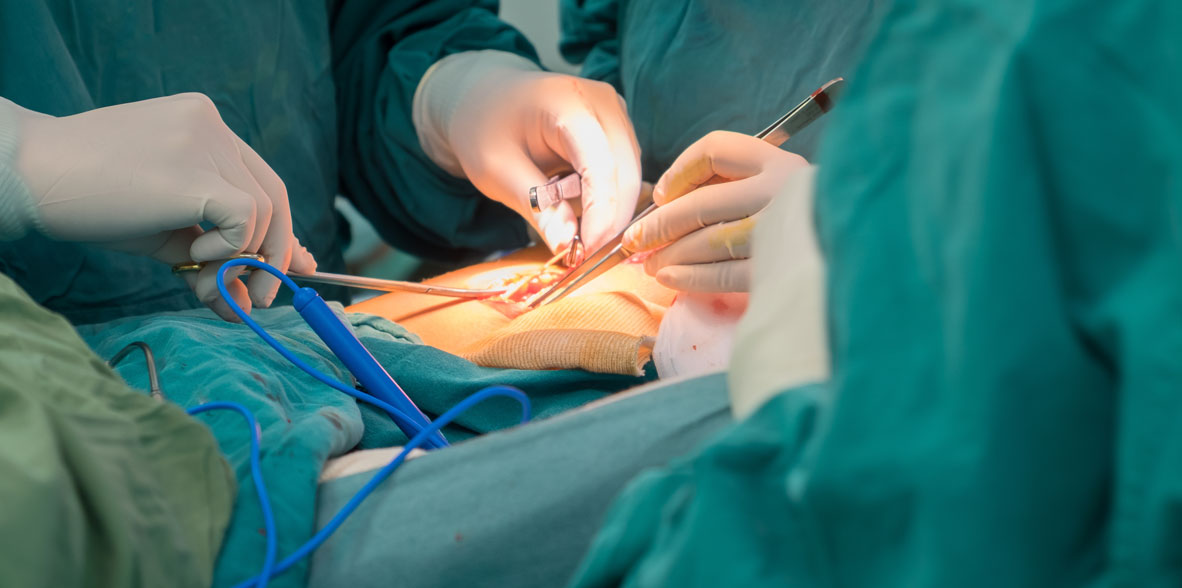

 Centro Médico Teknonen/health-centers/centro-medico-teknon
Centro Médico Teknonen/health-centers/centro-medico-teknon
An anorectal fistula (fistula in the anus) is an abnormal path from the anus or rectum to the skin near the anus, although it can occasionally go to another organ, such as the vagina. In general, fistulas begin in a gland deep in the wall of the rectum or anus. Sometimes fistulas are the result of drainage from an anorectal abscess, but often the cause cannot be identified.
This condition is more common in carriers of Crohn's disease or in people with tuberculosis. They can also occur in people with diverticulitis, cancer, or anal or rectal injury. A fistula in an infant is usually due to a birth defect and is more common in boys than girls. Fistulas connecting the rectum and vagina may be due to a complication of radiation therapy, cancer, Crohn's disease, or an injury to the mother during delivery.
- Symptoms and diagnosis
A fistula may be painful or it may excrete pus. One or more openings in a fistula may be seen, or it may be noticed under the skin.
By inserting a probe you can determine its depth and direction. The doctor can locate the internal opening by looking through an anoscope inserted into the rectum and by scanning with a probe. Inspection with a sigmoidoscope helps determine if cancer, Crohn's disease, or another disorder is causing the problem. The only effective treatment is surgery.
Perianal fistulas are paths lined with granulation tissue that connect the lining of the anal canal and more infrequently the rectum with the perianal skin.
- Fistula classification
The use of a classification for perianal fistulas has three objectives: to be able to establish a type of treatment according to the type of fistula, to allow the individual prognosis of the treatment, both in terms of frequency of recurrence and incontinence, and to allow the comparative evaluation of results with the literature series.
The most used classification currently is Parks. With it, fistulas are classified into intersphincter, transsphincterian, suprasphincter and extrasphincterian. It should be noted that this classification has two problems, since in many cases it is difficult to know if a fistula is high transsphincter or suprasphincterian. Moreover, this classification does not include Complex Fistula Subcutaneous Fistulas.
The term complex fistula is frequently observed in the literature. This is an imprecise term, because a complex fistula implies the existence of a fistula whose treatment implies a greater number of recurrences or continence disorders. In this sense, complex fistulas are those produced by diseases that have a tendency to recur greater than that of fistulas of cryptoglandular origin, such as inflammatory disease and hidrosadenitis.
Recurred fistulas and those with secondary paths are also considered complex fistulas.
- Fistulas and abscesses
Abscesses and fistulas are conditions that occur in relation to continuous sepsis. The origin is an acute suppurative process and the term is a communication between two epithelial surfaces.
While perianal and perirectal abscesses can derive from a variety of causes: (trauma, neoplasms, radiation, tuberculosis, actinomycosis, Crohn's disease, fissurary or iatrogenic disease), most are idiopathic. The cryptoglandular theory is the most commonly accepted etiology in these cases, that is, the infection originates in a crypt and from there through the glandular ducts reaches the glands and the intersphyteric space.
Abscesses and fistulas occur twice as often in men as in women. The four types of anorectal abscesses are perianal, ischiorectal, pelvirectal and submucosal. The differentiation between these types is important for the therapeutic definition.
Patients with a perianal or ischiorectal abscess have a classic history of acute perianal pain and inflammation, usually with purulent discharge. This may or may not be preceded by diarrhea. Anorexia, general condition compromise or high fever is usually seen in immunocompromised, debilitated or evolving patients with pelvirectal abscesses.
Patients with submucosal abscesses report rectal pushback and high pain in the anal canal. This pain is deep, constant, intense and is aggravated by pushing or coughing.
Patients with an anal fistula usually report a history of a previous abscess that drained spontaneously or surgically. Some report persistent anal purulent discharge with or without anal pruritus. Others report the formation of recurrent abscesses.
Antibiotics do not play an important role in the treatment of abscesses. The most important thing is surgical drainage. Antibiotics are useful in elderly patients, diabetics or with heart prostheses.
Perianal and ischiorectal abscesses are drained under local anesthesia on an outpatient basis. Drainage should always be wide.
Submucosal, pelvirrectal or horseshoe complex abscesses require treatment in the ward with hospitalization.
In patients who are undergoing an anal abscess is contraindicated the realization of the digital rectal examination, what should be done if there is a diagnostic doubt is the examination under anesthesia.
Treatment alternatives for anorectal fistulas are fistulotomy or fistulectomy.
Fistulotomia is the opening of the fistulous tract without resecting it, and is indicated in intrasphincter fistulas.
Fistula resection, or fistulectomy, is indicated in trans or extrasphincter fistulas. When the external sphincter is significantly compromised, it must proceed to the elastic ligation of this, which achieves its delayed section preventing anal incontinence.
Cryptoglandular origin not specified:
- Inflammatory
- Crohn's disease
- Ulcerative colitis - infectious
- Tuberculosis
- Venous lymphogranuloma
- Actinomicosis
- Differential diagnosis of fistulized abscesses
- Actinomicosis
- Penetrating injuries
- Abscesses of Bartholin's glands
- Enfermedadpilonidal
- Carcinoma
- Presacral tumors
- Fissure
- Anal itching
- Folliculitis
- Fistula rectovaginal
- Hidrosadenitis supurativa
- Sebaceous cyst
- Pelvic osteomyelitis
- Tuberculosis
- Uretroperineal fistula
- Anorectal abscesses
An anorectal abscess is a collection of pus caused by bacteria invading the space around the anus or rectum. Abscesses located under the skin can cause pain and swelling and the area may appear red and very painful to the touch.
Often, the doctor may see an abscess in the skin around the anus. With your finger you can perceive a painful swelling in the rectum, even if you do not see a swelling. Rectal abscesses located higher up may not cause rectal symptoms but may cause fever and pain in the lower abdomen.
- Treatment
Antibiotics are of little use except in case of fever, in diabetics or in those who, in addition, have an infection in another part of the body. Treatment usually involves injecting an anesthetic locally, making an incision in the abscess, and emptying the pus. Occasionally, the person must be hospitalized for general anesthesia before surgery. Once all the pus has been drained, an abnormal path to the skin (anorectal fistula) may develop.



































